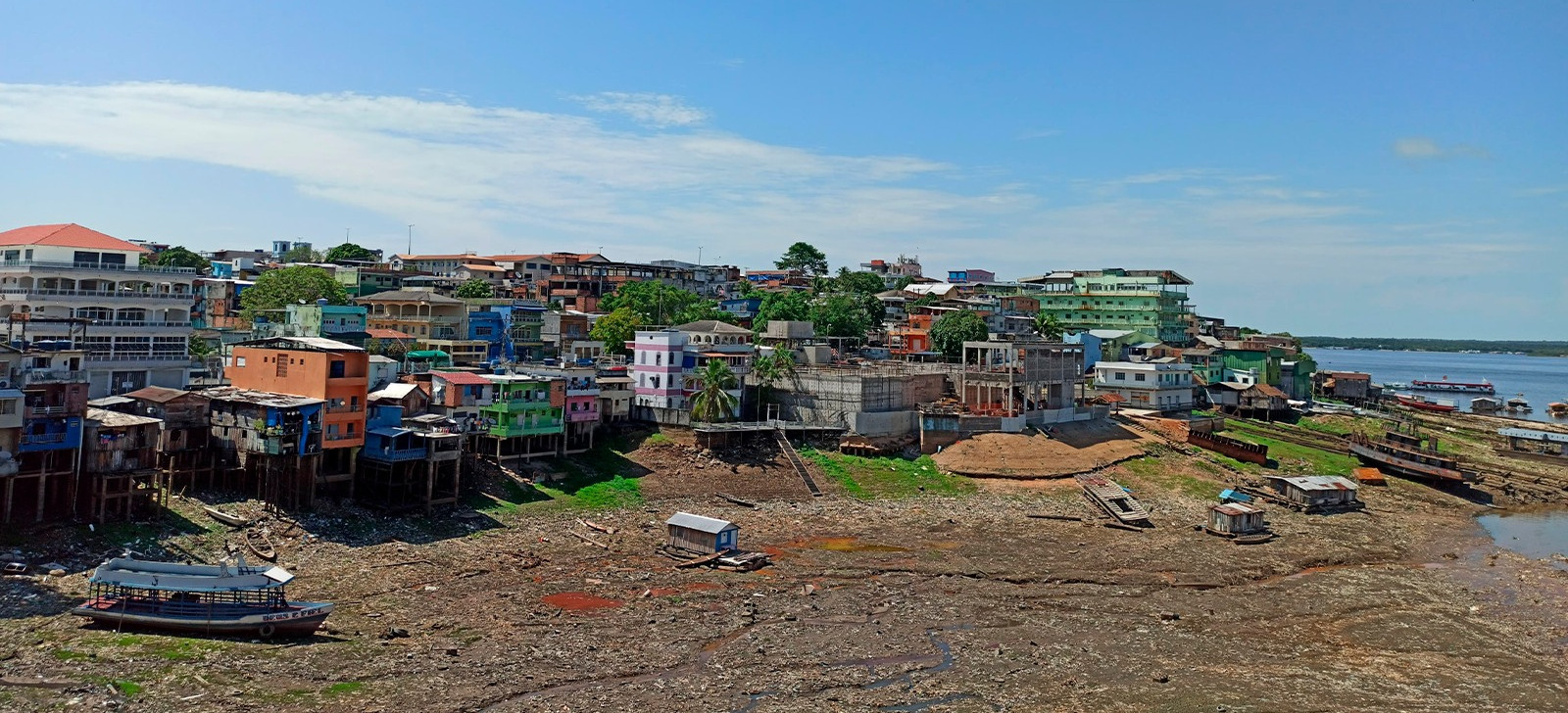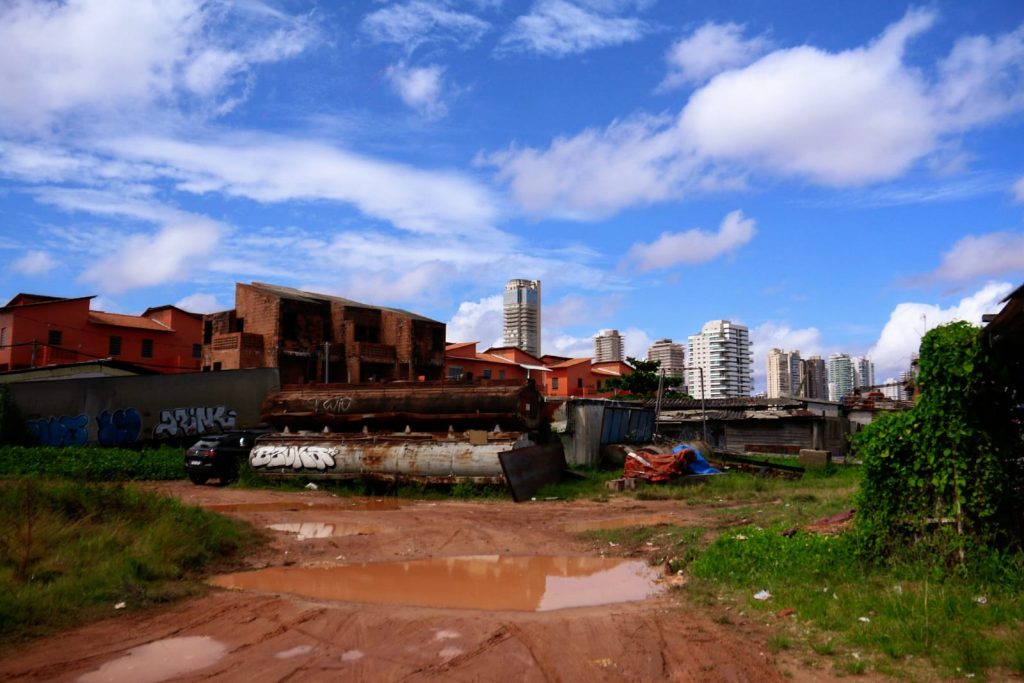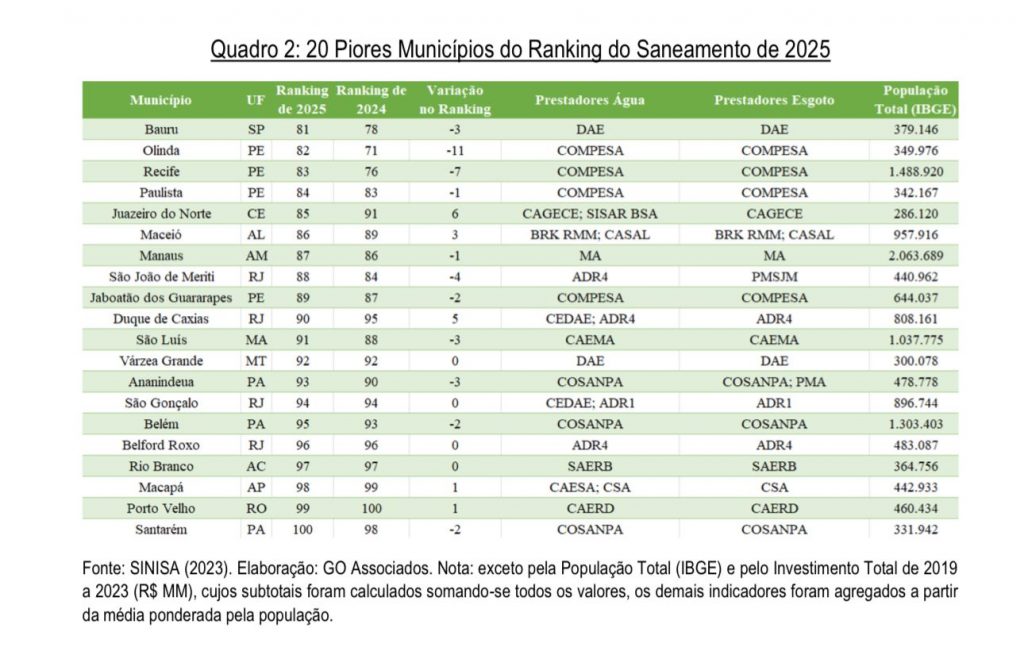Cities in the Legal Amazon rank among the worst in the country for sanitation
17 de July de 2025

By Fabyo Cruz – From Cenarium
BELÉM (PA) – The latest Sanitation Ranking, released this Tuesday, the 15th—marking five years since the Basic Sanitation Legal Framework—by the Trata Brasil Institute in partnership with GO Associados, revealed that municipalities in the Legal Amazon are among the worst in the country when it comes to basic sanitation services. State capitals such as Belém (PA), Manaus (AM), São Luís (MA), Rio Branco (AC), Macapá (AP), and Porto Velho (RO) occupy the lowest positions, alongside cities like Santarém (PA), Ananindeua (PA), and Várzea Grande (MT).
The study’s data, based on the new National Sanitation Information System (Sinisa), paints a troubling picture. In Santarém, only 3.77% of the population has access to sewage collection—the worst rate among the 100 municipalities evaluated. Ananindeua, the second most populous city in Pará, invested R$46.51 per capita per year between 2019 and 2023, while the ideal amount for sanitation universalization would be R$223.82, according to the National Basic Sanitation Plan (Plansab), from the Ministry of Cities.
In Pará’s capital, Belém—host of the 30th UN Climate Change Conference (COP30)—the problems persist: only 19.34% of the population has access to sewage services, and over 60% of treated water is lost during distribution. The situation in Rio Branco is even more critical, with an annual investment of just R$8.10 per capita, the lowest among all state capitals. In Porto Velho, only 35.02% of the population has access to treated water—the worst figure in the ranking.

In Manaus, the outlook is equally alarming: the capital of Amazonas ranks among the 20 worst municipalities in the country, with low sewage collection and treatment rates and an average annual per capita investment far below what is needed. The report highlights that the city has not reached 50% coverage for sewage services and remains far from the goal of universal access.
São Luís, the capital of Maranhão, invested R$21.45 per capita per year, contributing to the poor service coverage: 74.69% of the population has access to water, and only 15.89% to sewage treatment—one of the lowest rates in the country.
Meanwhile, Várzea Grande, part of the Greater Cuiabá Metropolitan Area (RMVRC), shows one of the highest water distribution loss rates at 58.87%, revealing system inefficiency and significant waste of water resources.

According to the study, while the 20 best-performing municipalities invested an average of R$176.39 per capita per year, the 20 worst invested just R$78.40—around 65% below the necessary level. These low investment rates translate into severe deficits in the coverage of essential services such as sewage collection and treatment, water supply, and loss control.
In the report, the Trata Brasil Institute warns that without increased investments and political prioritization, these cities are unlikely to achieve the universal sanitation targets set out in the new Legal Framework. The legislation aims for 99% of the population to have access to treated water and 90% to sewage collection and treatment by 2033.

